
Sabre Wulf is an action-adventure game released by British video game developer Ultimate Play the Game for the ZX Spectrum home computer in 1984. The player navigates the pith-helmeted Sabreman through a 2D jungle maze while collecting amulet pieces to bypass the guardian at its exit. The player does not receive explicit guidance on how to play and is left to decipher the game's objectives through trial and error. Sabreman moves between the maze's 256 connected screens by touching the border where one screen ends and another begins. Each screen is filled with colourful flora, enemies that spawn at random, and occasional collectibles.

3D Monster Maze is a computer game developed from an idea by J.K. Greye and programmed by Malcolm Evans and released in February 1982 for the Sinclair ZX81 platform with the 16 KB memory expansion. The game was initially released by J. K. Greye Software in early 1982 and re-released later the same year by Evans' own startup, New Generation Software. Rendered using low-resolution character block "graphics", it was one of the first 3D games for a home computer, and one of the first games incorporating typical elements of the genre that would later be termed survival horror.

Underwurlde is a 1984 action-adventure platform video game in the Sabreman series by Ultimate Play the Game for the ZX Spectrum and Commodore 64. The player controls the adventurer Sabreman as he jumps between platforms in a castle and its caverns to find an escape past the exit guardians. Underwurlde features about 600 flip screen areas. Unlike other games of its time, Sabreman is not injured when touched by enemies and is instead knocked backwards. Underwurlde is the second game in the series, between Sabre Wulf and Knight Lore, and released alongside the latter for the ZX Spectrum during Christmas in 1984. Another developer, Firebird, ported the game to the Commodore 64 the next year.

Lunar Jetman is a horizontally scrolling shooter developed and published by Ultimate Play the Game. It was released for the ZX Spectrum in 1983 and later on the BBC Micro. In this sequel to Jetpac, the second installment of the Jetman series, Jetman has to destroy alien bases whilst simultaneously defending himself, along with Earth, from a hostile alien race.
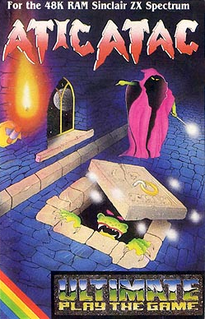
Atic Atac is an arcade-adventure video game developed and published by Ultimate Play the Game, released for the ZX Spectrum and the BBC Micro in 1983. The game takes place within a castle in which the player must seek out the "Golden Key of ACG" by unlocking doors and avoiding enemies. It was Ultimate's second game to require 48K of RAM; most of their previous games for the Spectrum ran on unexpanded 16K models.

Tornado Low Level is a multidirectional shooter developed by Costa Panayi and published in 1984 by the company he co-founded, Vortex Software. The game was released for the ZX Spectrum in 1984, with ports for the Amstrad CPC and Commodore 64 in 1985.
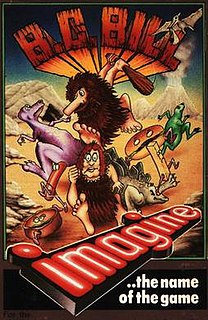
B.C. Bill is a 2D action video game published by Imagine Software in 1984. It was released for the Commodore 64, ZX Spectrum, TRS-80 Color Computer, Dragon 32/64 and BBC Micro.
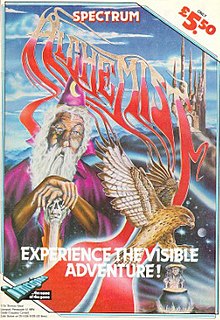
Alchemist is an action-adventure game for the ZX Spectrum and released by Imagine Software in 1983. The player controls an alchemist who can shape-shift into a golden eagle.
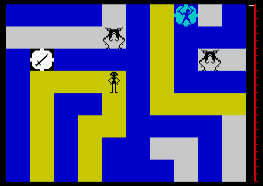
Maziacs is an action adventure maze game published by DK'Tronics in 1983 for the ZX Spectrum, Commodore 64, and MSX.

Bruce Lee is a platform game written by Ron J. Fortier for the Atari 8-bit family and published in 1984 by Datasoft. The graphics are by Kelly Day and music by John A. Fitzpatrick. The player takes the role of Bruce Lee, while a second player controls either Yamo or alternates with player one for control of Bruce Lee.

Chequered Flag is a racing video game developed by Steve Kelly for Psion Software and published by Sinclair Research in 1983. It was the first driving game published for the ZX Spectrum and one of the first computer car simulators.
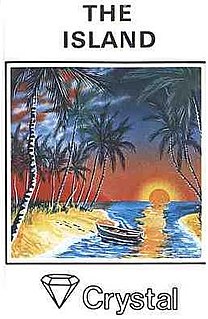
The Island is a ZX Spectrum text adventure developed and released by Crystal Computing in 1983. The player is the survivor of a plane crash. The aim of the game is to find the valuable treasure and escape from the island.

The Dukes of Hazzard is a 1984 racing video game developed and published by Coleco for their ColecoVision game console and Coleco Adam computer. Elite Systems released a different game with the same title for the ZX Spectrum computer on February 23, 1985. Both versions are based on the television series of the same name.

The Seiddab Trilogy is a series of video games designed by Steve Turner for the ZX Spectrum and published by Hewson Consultants. It consists of 3D Space-Wars (1983), 3D Seiddab Attack (1984), and 3D Lunattack. All three games were later published together as The Seiddab Trilogy by Hewson for the Rotronics Wafadrive. The series name is derived from the word "baddies" being spelt in reverse.
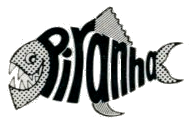
Piranha Software was a short-lived video game publishing label created by Macmillan Publishers in 1986 and closed eighteen months later. In that time it gained a reputation for its unusual output from well known developers such as Don Priestley, Design Design and Delta 4. The majority of their games featured licensed properties including the first video game based on the Discworld novels and two games based on the animated television series The Trap Door.
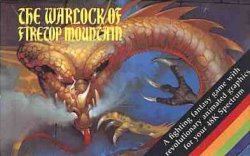
The Warlock of Firetop Mountain is an arcade adventure video game released by Crystal Computing in 1984 for the Sinclair ZX Spectrum home computer. It is loosely based on the adventure gamebook of the same name written by Steve Jackson and Ian Livingstone, and published by Puffin Books in 1982.
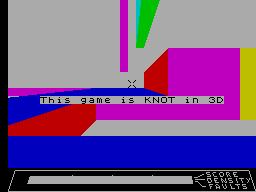
Knot in 3D is a ZX Spectrum game by Malcolm Evans, originally published in 1983 by New Generation Software. It resembles a three-dimensional version of the Light cycles game from the film Tron.
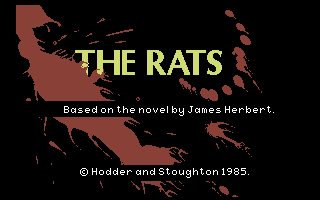
The Rats is a survival horror text adventure for the Commodore 64 and ZX Spectrum computers. It is based on the 1974 novel The Rats by James Herbert. The game was programmed by GXT, and published by Hodder & Stoughton, who were the publishers of James Herbert's book The Rats. An Amstrad CPC version was planned, but was never released.
Scetlander (later known as Lander Software was a software publisher which released titles for various 8- and 16-bit home computer systems in the 1980s and 1990s.

Yabba Dabba Doo! is a 1986 video game developed by British studio Taskset and published by Quicksilva for the Amstrad CPC, Commodore 64 (C64), and ZX Spectrum. It is based on the television series The Flintstones and is the first Flintstones video game.



















